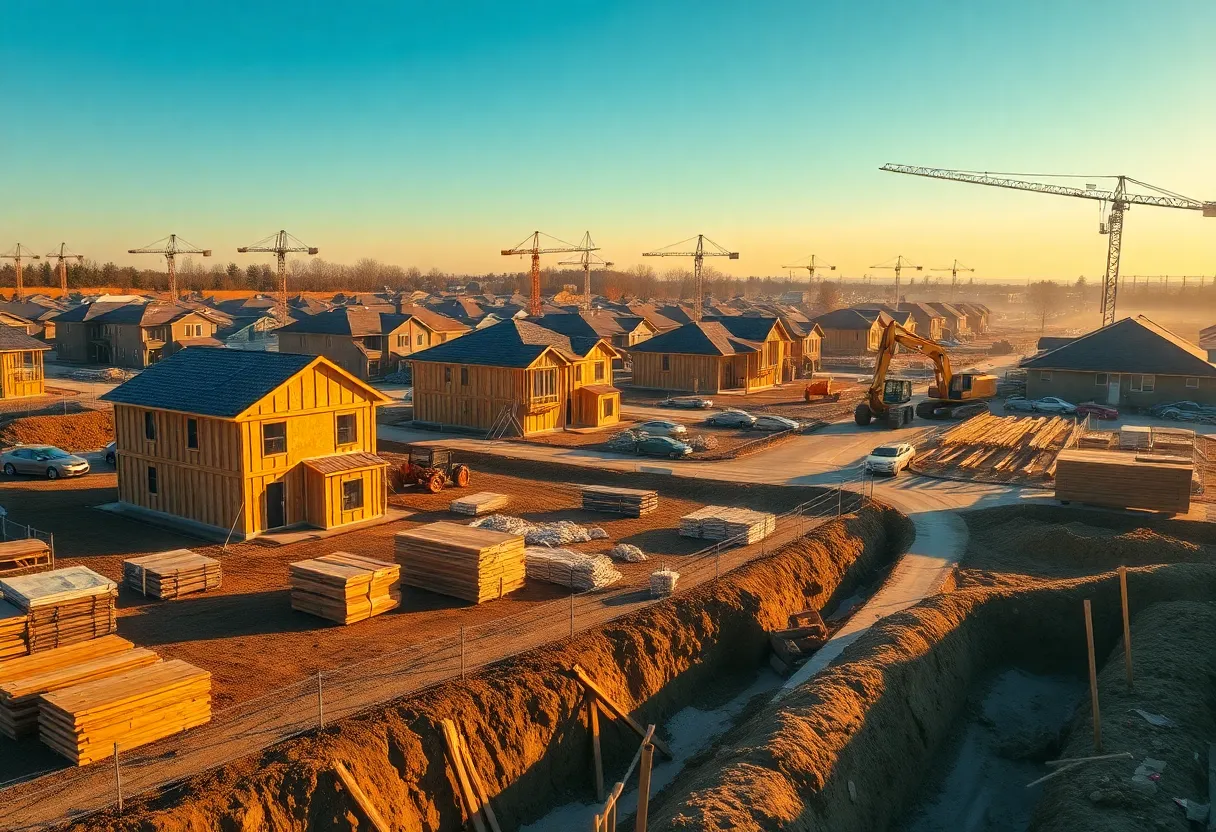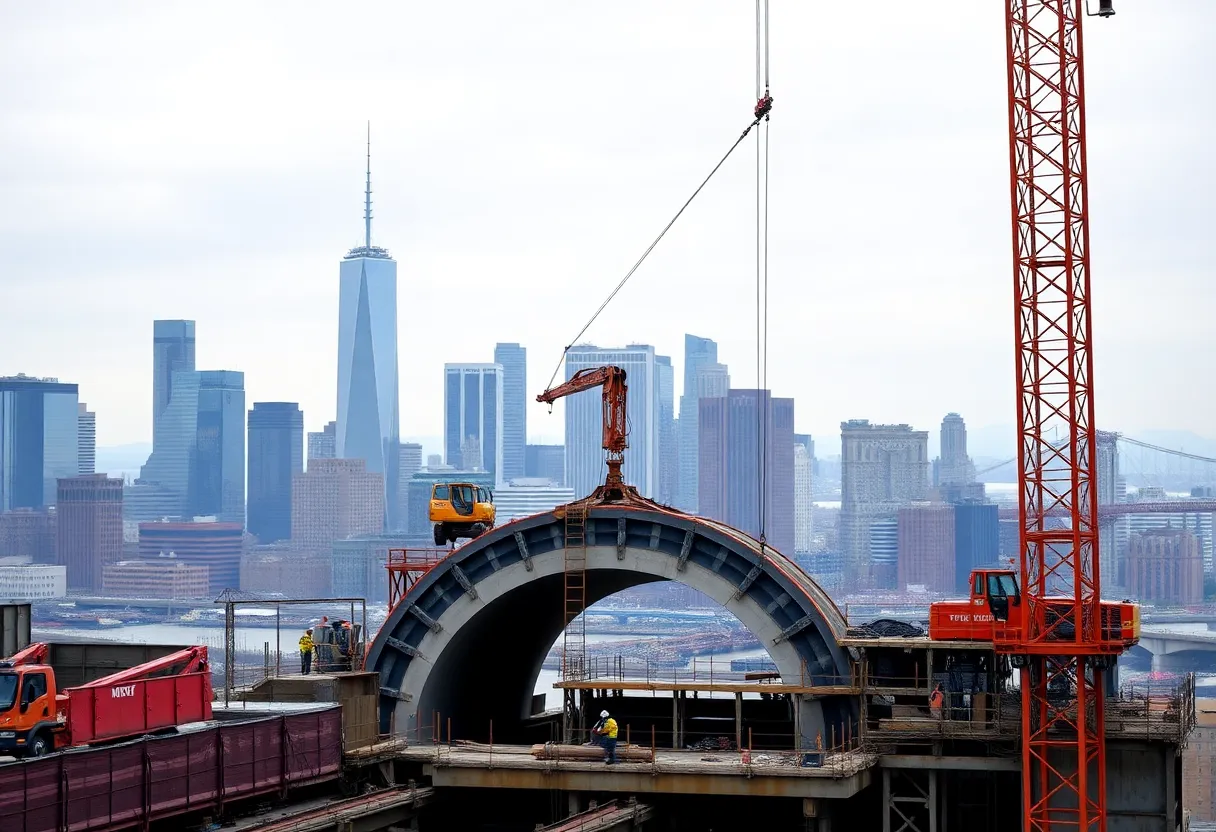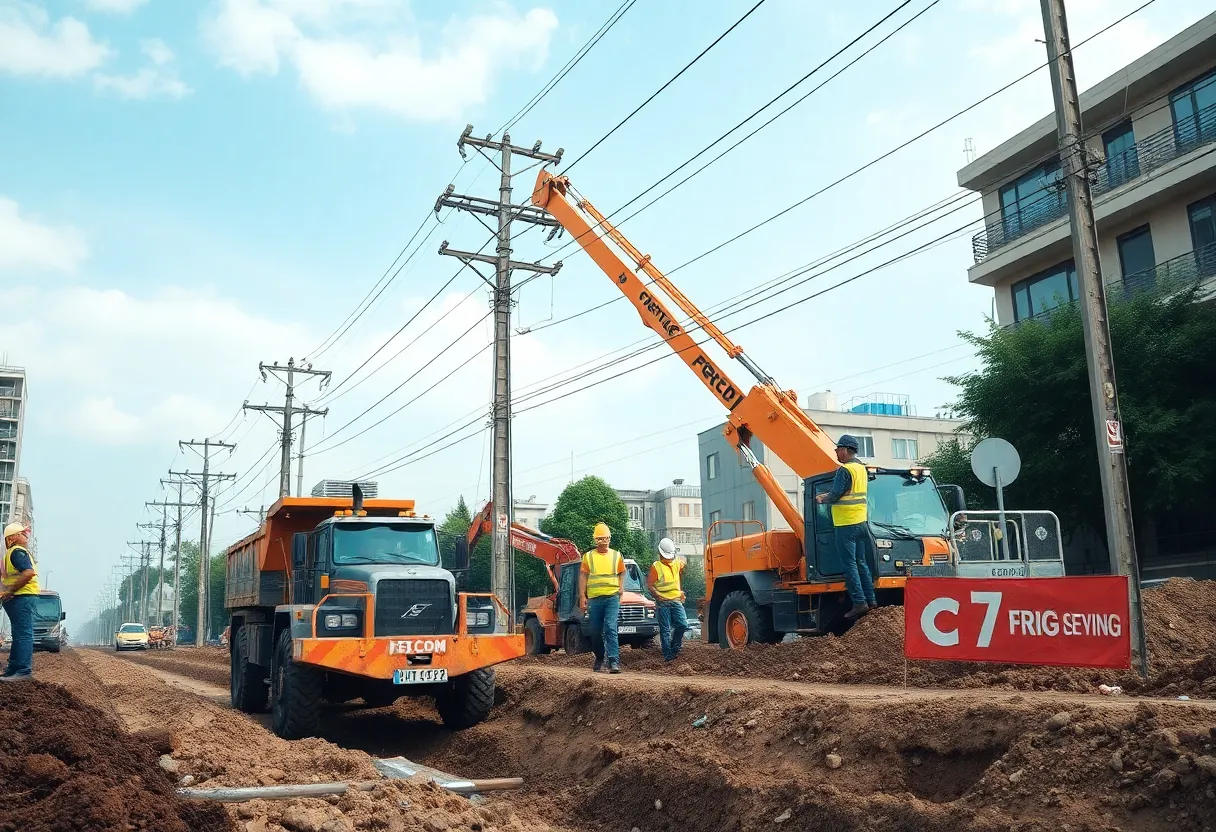United States, October 1, 2025
News Summary
A growing shortage of homes has pushed new construction to the forefront, but many banks are retreating from speculative ground-up projects. Private capital is filling that financing gap by offering faster closings, flexible underwriting and phased, performance-based funding tied to construction milestones. Although private construction loans often carry higher rates, quicker draws and localized project expertise can reduce delays, lower carrying costs and improve returns. Regional trends show strong demand in the Southeast and Sun Belt while multifamily pipelines have cooled. Heat-safety rules and scarce shovel-ready lots also shape schedules and labor availability for builders.
Private Capital Steps In as Banks Pull Back; Heat-Safety Rules and Apartment Supply Shift the Housing Landscape
Private lenders are increasingly financing ground-up homebuilding as traditional banks retreat from construction loans, while concerns about worker heat safety and a slowing multifamily pipeline reshape where and how housing is built. The shift is widening options for developers but also adds new trade-offs for projects, lenders and communities facing a persistent housing shortage.
Top lines: why private lending matters now
A shortage of homes across most U.S. price points has amplified demand for new construction. Securing financing for ground-up development remains one of the toughest hurdles. Institutional lenders have left a gap in construction lending that private capital is increasingly filling. Private funding is being viewed less as just an alternative and more as a primary engine for the next wave of residential development.
What private lenders bring to projects
Private lenders offer speed, flexibility and local market knowledge. They frequently close loans in a matter of weeks and, in many cases, complete closings in under two weeks. Draw disbursements can be processed rapidly using modern technology, shortening wait times from days to hours. Those time savings let builders seize opportunities, maintain schedules and avoid delays that can stall work.
Unlike banks bound by rigid regulations and lengthy documentation requirements, many private lenders write tailored underwriting guidelines and creative structures. Examples include phasing large subdivisions into performance-based segments tied to construction milestones and focusing underwriting on the asset and deal viability rather than borrower income or credit scores. That approach helps developers and experienced contractors get capital even when traditional lenders are reluctant.
Costs, controls and due diligence
Private lending often carries higher nominal interest rates than bank loans. However, total project savings from streamlined processes, faster construction and earlier sales can outweigh higher rates. Leading private lenders perform exhaustive due diligence at the start—reviewing architectural plans, budgets and draw schedules—so underwriting and draw management are tightly integrated to reduce friction and miscommunication.
Balance-sheet lenders retain control over loan and draw management through project completion, providing continuity and a single point of contact. That accountability can be critical for keeping projects on track. Private lenders also often scale with the borrower, syndicating behind the scenes while maintaining direct access for developers.
Where private capital is most active
Demand for new construction solutions is strongest where housing supply is limited and population growth is high. Private lending activity is notable in the Southeast, Southwest and parts of the Mid-Atlantic. The Northeast faces geographic constraints that limit new development, the Midwest and Rust Belt see more renovation and fix‑and‑flip activity, and migration patterns continue to favor the Southeast and Sun Belt.
Multifamily building is slowing even as inventory expands
The multifamily construction pipeline has contracted sharply. The number of apartments under construction fell nearly 50% from its peak in the first quarter of 2023. Despite a slower pace, the U.S. is on track to add roughly 500,000 new multifamily units in the referenced year, and much of the recent apartment boom has concentrated in Southern and Sun Belt metros, including Dallas, Austin, Phoenix, Raleigh, Charlotte and Nashville.
Developers have leaned toward higher‑cost, luxury apartments because rising land, labor and material costs make midrange or affordable apartment projects harder to justify near urban cores. New apartment supply is expected to help keep rents relatively flat in parts of the Southeast and Southwest next year, although rent trends vary by region: recent measures show rent declines in many Southern markets while Midwest and Northeast rents rose modestly year over year.
Heat-safety preemption and worker protection trends
Heat safety for outdoor workers has become a growing policy issue. Several Sun Belt states have enacted laws that stop local governments from requiring added heat breaks or other protections beyond state or federal standards. Those preemption measures limit local efforts to mandate water, shade and cooling breaks for outdoor workers, even as extreme‑heat days increase and heat-related deaths rise in multiple states.
Some local jurisdictions have moved ahead with protections when not preempted. For example, one major city adopted requirements for rest, shade, water and cooling for outdoor workers, while other places have no comparable local rules. Worker advocates warn that younger and newly hired workers are especially vulnerable to heat illness, and that lack of protections could make recruitment and retention in construction harder.
Heat exposure on jobs is intensified by hot materials and surfaces. Field measurements on a paving job in July 2024 recorded ambient air at about 92°F by midmorning while a finish roller registered 102–106°F, reflecting higher mat temperatures nearby. Dark pavement surfaces can run tens of degrees hotter than the air, adding radiant heat that increases risk for crews.
Regulatory timing and resources
Federal rulemaking on workplace heat is underway, with a final public comment period for a proposed rule scheduled to close on September 30, 2025. Contractors have access to industry templates for heat illness prevention plans to adapt for jobsites. Private lenders and developers must consider permitting timelines, environmental reviews and jurisdictional rules, all of which affect project schedules and risk.
Bottom line for builders, lenders and brokers
New construction offers a different risk profile than renovation projects: timelines are longer, permitting and infrastructure requirements are more complex, and capital needs are larger. Yet, with banks stepping back from many types of construction lending—particularly horizontal work such as roads and utilities—private capital is increasingly the mechanism that moves projects forward. Success depends on partnerships among developers, brokers, originators and lenders that combine speed, funding flexibility and practical project oversight.
Author Information: Kevin Rodman is the author of this analysis and is listed as chief executive of a private lending firm. He has more than 38 years of experience in mortgage lending and real estate, including two decades-plus leading fixed-income financing and mortgage warehouse operations at a major financial firm and serving as CEO and president of affiliated mortgage businesses. Contact for the lending firm is P.O. Box 692, Bothell, WA 98041-0692; phone (800) 297-6061.
Frequently Asked Questions
Q: Why are private lenders filling the gap in construction financing?
A: After increased regulation following the financial crisis, many banks reduced exposure to construction lending, particularly for unentitled land and horizontal infrastructure. Private lenders, with fewer regulatory constraints, can underwrite on asset viability, move faster and structure deals to match project needs.
Q: Are private loans always more expensive?
A: Nominal interest rates tend to be higher than traditional bank loans, but faster closings, quicker draws, shortened construction schedules and earlier home sales can produce total project savings that offset higher rates.
Q: What regions see the most private lending activity for new homes?
A: Activity concentrates in fast-growth metros in the Southeast, Southwest and parts of the Mid-Atlantic. The Northeast faces geographic constraints that limit new development, while the Midwest sees more renovation-focused capital.
Q: How does the slowdown in multifamily construction affect housing markets?
A: A reduced multifamily pipeline narrows rental supply growth in some markets, but new units already under construction—concentrated in the Sun Belt—will continue to influence rent trends. Higher development costs have pushed many projects toward luxury product, limiting middle-income apartment additions in core neighborhoods.
Q: What should contractors and developers do about heat safety?
A: Use established heat-illness prevention templates, plan for shaded rest areas and hydration, train crews (especially younger or new workers) to recognize heat stress, and factor heat protocols into schedules to balance safety and productivity. Federal rulemaking may change employer obligations in the coming years.
{
“@context”: “https://schema.org”,
“@type”: “FAQPage”,
“mainEntity”: [
{
“@type”: “Question”,
“name”: “Why are private lenders filling the gap in construction financing?”,
“acceptedAnswer”: {
“@type”: “Answer”,
“text”: “After increased regulation following the financial crisis, many banks reduced exposure to construction lending, particularly for unentitled land and horizontal infrastructure. Private lenders, with fewer regulatory constraints, can underwrite on asset viability, move faster and structure deals to match project needs.”
}
},
{
“@type”: “Question”,
“name”: “Are private loans always more expensive?”,
“acceptedAnswer”: {
“@type”: “Answer”,
“text”: “Nominal interest rates tend to be higher than traditional bank loans, but faster closings, quicker draws, shortened construction schedules and earlier home sales can produce total project savings that offset higher rates.”
}
},
{
“@type”: “Question”,
“name”: “What regions see the most private lending activity for new homes?”,
“acceptedAnswer”: {
“@type”: “Answer”,
“text”: “Activity concentrates in fast-growth metros in the Southeast, Southwest and parts of the Mid-Atlantic. The Northeast faces geographic constraints that limit new development, while the Midwest sees more renovation-focused capital.”
}
},
{
“@type”: “Question”,
“name”: “How does the slowdown in multifamily construction affect housing markets?”,
“acceptedAnswer”: {
“@type”: “Answer”,
“text”: “A reduced multifamily pipeline narrows rental supply growth in some markets, but new units already under construction—concentrated in the Sun Belt—will continue to influence rent trends. Higher development costs have pushed many projects toward luxury product, limiting middle-income apartment additions in core neighborhoods.”
}
},
{
“@type”: “Question”,
“name”: “What should contractors and developers do about heat safety?”,
“acceptedAnswer”: {
“@type”: “Answer”,
“text”: “Use established heat-illness prevention templates, plan for shaded rest areas and hydration, train crews (especially younger or new workers) to recognize heat stress, and factor heat protocols into schedules to balance safety and productivity. Federal rulemaking may change employer obligations in the coming years.”
}
}
]
}
Key features at a glance
| Feature | What it means | Why it matters |
|---|---|---|
| Private capital speed | Closings in weeks; fast draw disbursements | Reduces construction delays and captures market opportunities |
| Flexible underwriting | Asset- and deal-focused criteria; tailored programs | Enables financing for projects banks avoid |
| Multifamily pipeline contraction | Nearly 50% drop from recent peak | Slows rental supply growth and may shift rent trends |
| Heat-safety preemption | State laws can stop cities from adding worker heat protections | Affects worker safety and labor availability on outdoor jobs |
| Regional patterns | Southeast/Sun Belt growth; Midwest renovation focus | Shapes where new construction and private lending concentrate |
| Regulatory timing | Federal heat rule comment period closes Sept 30, 2025 | Potential new employer requirements for heat protection |
Additional resources: industry heat-illness prevention templates are publicly available online for contractors to adapt. The federal rulemaking docket for workplace heat accepts public comment via the regulations portal.
Deeper Dive: News & Info About This Topic
Additional Resources
- CoStar: After leading US in multifamily construction for years, Sun Belt sees biggest plummet in building activity
- Wikipedia: Multifamily housing
- ForConstructionPros: Heat safety rollbacks endanger road crews in the Sunbelt
- Google Search: heat safety rollbacks road crews Sun Belt
- GlobeSt: Sun‑Belt cities dominate the build‑to‑rent housing wave
- Google Scholar: build-to-rent Sun Belt
- Business Insider: Rents falling in southern Sunbelt cities as apartment building rises
- Encyclopedia Britannica: Search — Sun Belt housing market
- Reason (Volokh): NIMBYism stifles housing construction in previous growth areas
- Google News: NIMBYism housing construction Sun Belt
Author: Construction NY News
The NEW YORK STAFF WRITER represents the experienced team at constructionnynews.com, your go-to source for actionable local news and information in New York and beyond. Specializing in "news you can use," we cover essential topics like product reviews for personal and business needs, local business directories, politics, real estate trends, neighborhood insights, and state news affecting the area—with deep expertise drawn from years of dedicated reporting and strong community input, including local press releases and business updates. We deliver top reporting on high-value events such as the New York Build Expo, infrastructure breakthroughs, and cutting-edge construction technology showcases. Our coverage extends to key organizations like the Associated General Contractors of New York State and the Building Trades Employers' Association, plus leading businesses in construction and real estate that power the local economy such as Turner Construction Company and CMiC Global. As part of the broader network, including constructioncanews.com, constructiontxnews.com, and constructionflnews.com, we provide comprehensive, credible insights into the dynamic construction landscape across multiple states.





